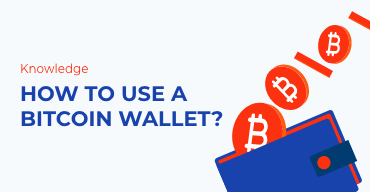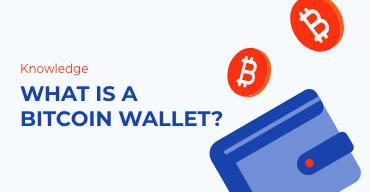The latest crypto craze has induced you to invest some money into cryptocurrencies, but you still don’t have a clue how to use Bitcoin? No worries, it really isn’t that complicated at all, as you’ll see from this short guide.
Best Practices for Handling Bitcoins
Store Your Bitcoins Safely
It’s better not to store Bitcoin on an exchange or in an online wallet, even though exchanges nowadays provide better security, and some even insure your funds. For example, online wallets are usually insured against employee theft and physical and cybersecurity breaches. An online or hot wallet represents software that’s always connected to the internet. A cold wallet stores Bitcoin without being connected to the internet all the time. Using cold wallets (also known as cold storage or hardware wallets) is the best way to keep your funds secure.
Using Bitcoin responsibly and securely storing it means you need to:
- Encrypt your wallet or a smartphone with a wallet app
- Use a strong password and memorize it
- Use an offline wallet for savings and a hot wallet for payments and transactions
Don’t Lose Your Private Key
Each Bitcoin address consists of two elements. The address is the public key anyone can see on the blockchain, and it’s used to receive payments. A private key is a string of letters and numbers that acts as a cryptographic password allowing access to the funds stored at the public address. Keeping it secure is the priority of every Bitcoin trader or user, and here’s why.
To send BTC from an address, you have to digitally sign the transaction with the private key. Without it, you wouldn’t be able to access funds in your wallet. Many Bitcoin users have lost their private keys, and their wallets have become permanently inaccessible. Learn from their mistakes and keep secured backups.
Beware of Price Volatility
Even though Bitcoin is an established presence from a technological standpoint since its inception more than a decade ago, it’s still a newcomer to the global economy. You can expect the price of Bitcoin to go up or down in short intervals. Bitcoin investment is, at this point, a high-risk and high-reward step to take. Patient investors can come out on top, as Bitcoin has increased a thousandfold in value over the years. However, investing beyond what you are ready to lose is never a good idea.
Double-Check Transaction Details
Bitcoin transactions are irreversible. The only way to be refunded is for the person who received the funds to send them back. If you are paying for goods or services with Bitcoin, ensure that you are doing business with trustworthy organizations. Even when you know how to use Bitcoin, mistakes still happen. Bitcoin can recognize typos, and in most situations, won’t allow you to send BTC to a nonexistent address.
Protect Your Privacy
While cryptocurrencies afford you a certain degree of privacy and anonymity, Bitcoin records all transactions on a public ledger. Due to the system’s transparency, anyone can see the balance and transactions of each Bitcoin address. Users behind addresses are anonymous until they make a transaction or disclose their personal details under different circumstances. However, if privacy is your concern, you can create a Bitcoin address for each transaction you make.
Pay Your Taxes
Many countries have imposed some kind of tax on Bitcoin and other cryptocurrencies. It’s up to you to stay informed on how to settle any financial obligations you might have when you cash in BTC. While Bitcoin is not recognized everywhere as a currency, it’s still subject to capital gains, income, sales, or payroll taxes.
Choosing a Bitcoin Wallet
Choose a Bitcoin wallet that suits your needs. Wallets are available on multiple platforms and can be installed on smartphones, PCs, or completely separate pieces of hardware. Depending on what you’re going to use Bitcoin for, you may consider either hot storage or cold storage. Knowing how to use a Bitcoin wallet and what they are for is an essential next step.
Mobile Wallets
Mobile wallets are most convenient for paying with cryptocurrency. They function like any smartphone payment app. Mobile wallets are designed to work with QR codes, allowing for a smooth experience without typing in a Bitcoin address. However, they are not without flaws.
Depending on Google’s or Apple’s attitude towards the wallet developer, they can remove the app from Google Play or the App Store. As you can imagine, this can make software updates difficult. Not to mention that losing your phone or damaging it can be a nightmare if you don’t have a backup.
Software Wallets
In the early days of mining and investing in Bitcoin, users had BTC stored on their PCs. Just like with mobile wallets, any malfunction or data erasure could lead to lost bitcoins. However, assuming you back up the necessary information, using software wallets has its perks.
You have direct control over your funds since they’re not on a third-party platform. Some wallets even allow you to operate as a node in the Bitcoin network. Nodes perform crucial tasks in the peer-to-peer network by hosting and updating copies of the blockchain.
Some software wallets allow for interaction with their hardware counterparts, which is excellent for security. Knowing how to set up a Bitcoin hardware wallet is the next step in securing your BTC savings.
Hardware Wallets
Any computer software is susceptible to spyware or malware, and having a private key stored separately in a hardware wallet is an excellent precaution. Hardware wallets are perfect for storing substantial amounts of Bitcoin and are widely recommended. Since they are not as portable as smartphone apps, they are not convenient for everyday payments. Also, given their dimensions – they are approximately the size of a USB stick – these wallets can be easily misplaced. Therefore, take extra care to secure and back them up.
How To Get Bitcoin To Your Wallet
Because Bitcoin mining is power-demanding and expensive, the best way to get Bitcoin is to purchase it for fiat currency on a trustworthy cryptocurrency exchange. Most exchanges accept major cards, such as Mastercard or Visa. Other payment methods will vary depending on your location.
After you register, you’ll be able to buy Bitcoin for cash and send it to your Bitcoin wallet address.
Sending and Receiving BTC With a Wallet
Receiving bitcoins is as simple as sending someone your Bitcoin address or, in case you are using a smartphone wallet, scanning the QR code.
If, on the other hand, you have some BTC you want to use for payments, no matter what software you’re using, the process will be similar to this:
- Enter the recipient’s public Bitcoin address or, in some cases, just scan the QR code
- Find the Send option in your wallet and paste the address
- Enter the amount you want to send
- Double-check the information you’ve entered
- Press Send
Final Thoughts
After learning these Bitcoin basics, it’s only a matter of finding a business that will accept it as a means of payment. Luckily, finding how to spend Bitcoin is getting easier every day since an increasing number of companies are willing to accept it as a payment method.
FAQ
Can Bitcoin be converted to cash?
Yes. There are plenty of online cryptocurrency exchanges that process thousands of Bitcoin transactions for cash or other cryptos every day.
How do beginners invest in bitcoins?
The best way for beginners to invest in Bitcoin is to create an account on a cryptocurrency exchange and buy it for fiat currency. After purchasing the desired amount of BTC, the best practice is to store it in a Bitcoin wallet. Our “How To Use Bitcoin” guide will be helpful when making the first steps in the world of cryptocurrency investing.
How do you pay with Bitcoin?
To pay with Bitcoin, you’ll need a Bitcoin wallet with sufficient funds and the recipient’s address. Mobile wallets are most convenient for everyday payments and expenses. Using the app is a simple matter of scanning the recipient’s QR code, entering the amount you need to pay, and clicking Send.





